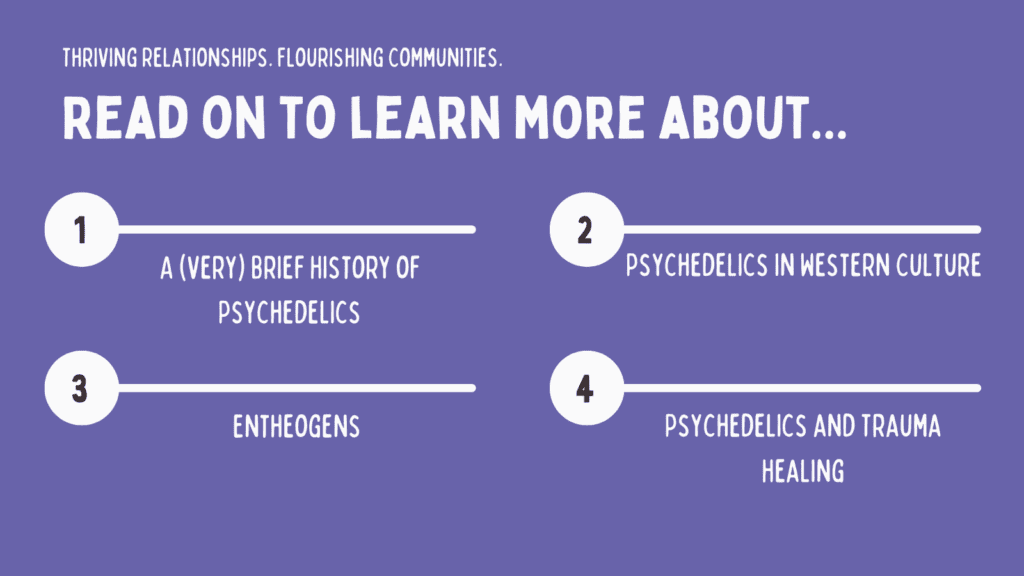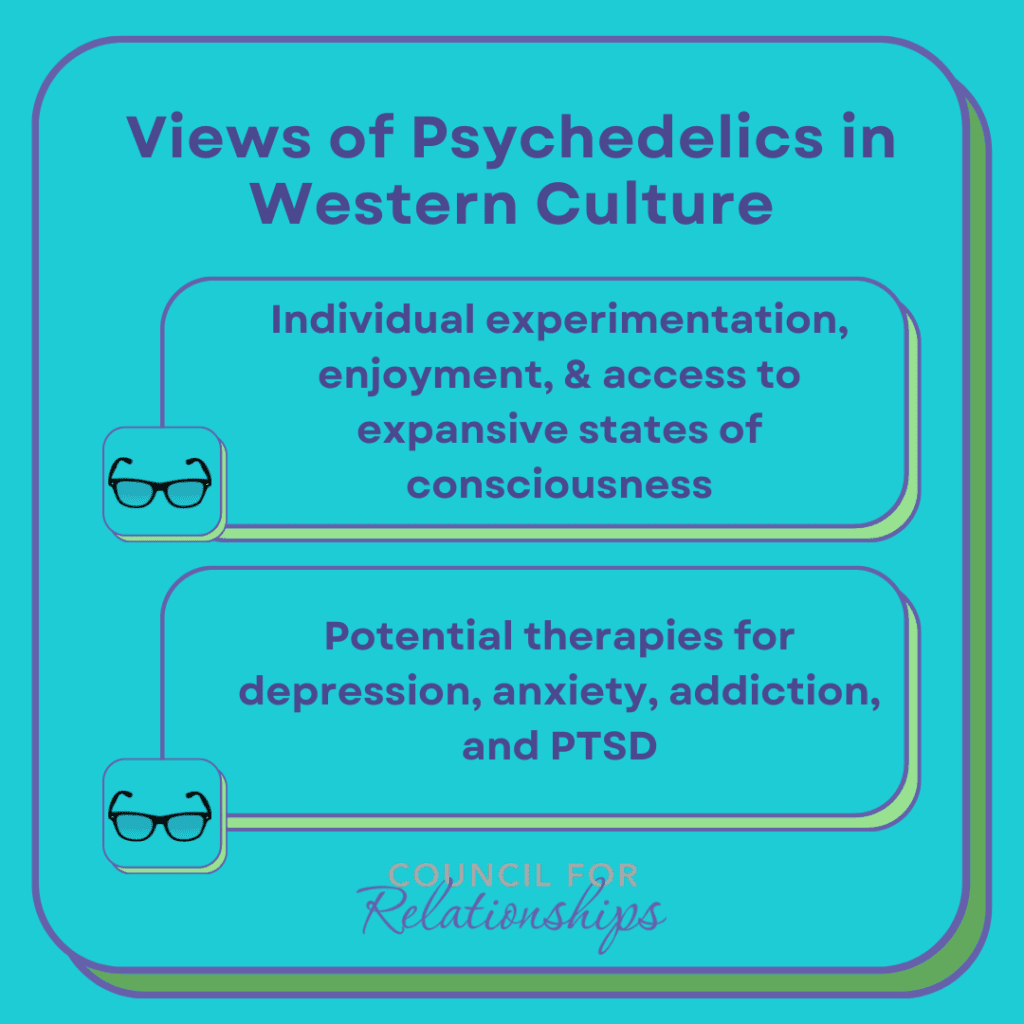Psychedelics and Trauma Healing in 2023
Humans have been using psychedelic drugs since the dawn of human civilization. However, only recently has Western culture and science begun to understand the potential mental health benefits of psychedelics for trauma healing.
This is the first of a two-part series on psychedelics and trauma. The discussion will focus on changing how the West thinks about psychedelics and learning from indigenous plant medicine knowledge. This will help us have different viewpoints and learn more as we move forward.
An Extremely Brief History of Psychedelics
The history of psychedelics goes back to the dawn of human civilizations. Across continents, time, and culture, human beings have shown a steadfast interest in experiencing expanded states of consciousness. Indigenous cultures used plants, mushrooms, and animal secretions as medicines for the soul and considered them essential.
Indigenous traditions use ceremonies and medicines to heal people and the planet and to connect with ancestors and nature. They promote transcendence and deep connections with the universe and spirit.
A sense of reverence sets apart the traditions that open these expanded states.
Psychedelics in Western Culture
Entheogen is a relatively newly coined term to designate psychoactive substances employed in culturally sanctioned visionary experiences in ritual or religious contexts.
Psychologists of religion prefer to use the term entheogen for psychoactive drugs like psilocybin, which significantly impact consciousness. Research has established a long history of religious groups using naturally occurring entheogens. Native American peyote cults use peyote to have mystical experiences and feel connected to something sacred or bigger.
In the West, people view these spirit medicines as entheogenic substances, considering two cultural perspectives:
- Our culture uses them for personal experimentation, enjoyment, and accessing expanded states of consciousness.
- They are also increasingly gaining recognition as potential therapies for depression, anxiety, addiction, and post-traumatic stress disorder (PTSD).
This creates a profitable industry worth billions, as the West wants to profit from valuable things. It focuses on medicalizing and regulating the use of these substances. Recreational use of psychedelic plants like psilocybe mushrooms, peyote cactus, and ayahuasca could create a market. In this market, western practitioners may charge high fees for their services.
Lawmakers are passing more laws to allow the use of drugs, such as decriminalization and supervised medical use. Legal access by the public is increasing through clinical trials and legal therapeutic pathways as they open. Pennsylvania permits Ketamine, and the FDA is expected to approve MDMA by early 2024.
Entheogens
Neuroscience research has discovered that these substances can enhance the brain’s ability to learn and adapt. They also promote flexibility, openness, and vulnerability, commonly observed in childhood. Entheogens can induce potent and gradual brain activity. This activity links the emotional and behavioral brain areas with the frontal cortex and brainstem.
Neuroscience has identified “critical periods” in brain development. These periods mainly occur during childhood.
Physical, mental, and emotional learning are most accessible during these periods. Additionally, the creation of new neurons is standard. Indications suggest that adults can re-open this process for short periods using entheogens.
Is this valuable information for developing new ways to treat trauma? This remains a topic of debate and ongoing research.

Infographic courtesy of the Boys & Girls Club of Monmouth County.
Psychedelics and Trauma Healing
Trauma occurs when something terrible happens to you or when you’re in a harmful place for a long time. Sometimes, trauma can occur when something terrible happens to you. Other times, trauma can develop when you find yourself in a harmful situation for an extended duration. It affects both emotions and the body.
This can happen to individuals or groups. Examples include those involved in a train crash, a large population affected by genocide, or a climate crisis. In these cases, it is a form of collective trauma. Traumatic events overwhelm the nervous system and the body/mind’s ability to handle and understand what happened.
Good treatments for PTSD and C-PTSD include a safe place and a caring person nearby. This allows individuals to revisit and work through experiences that were too difficult to handle. Feeling safe and having someone caring around is essential for our nervous system to regulate itself.
People from the West who have taken mind-altering drugs often feel a strong bond with others. They also experience a sense of reliance on each other. Additionally, they gain a deep understanding of the world’s significance and harmony.
We are not yet aware of the possibilities that reprocessing and integrating traumatic life experiences may create. Tips to improve brain flexibility in adults while ensuring they feel safe, included, and have a stable nervous system. It does seem to offer promising potential.
About the Author
Michele Southworth, JD, LMFT, is a therapist from Pennsylvania who offers online and in-person counseling. She is also the Director of CFR’s Postgraduate Certification Program. If you have questions about psychedelics and trauma, the history of psychedelics, psychedelics in Western culture, entheogens, psychedelics, and trauma healing, or would like to request an appointment with Michele, click here.
See our Therapist & Psychologist Directory to find a different CFR therapist or psychiatrist near you.




